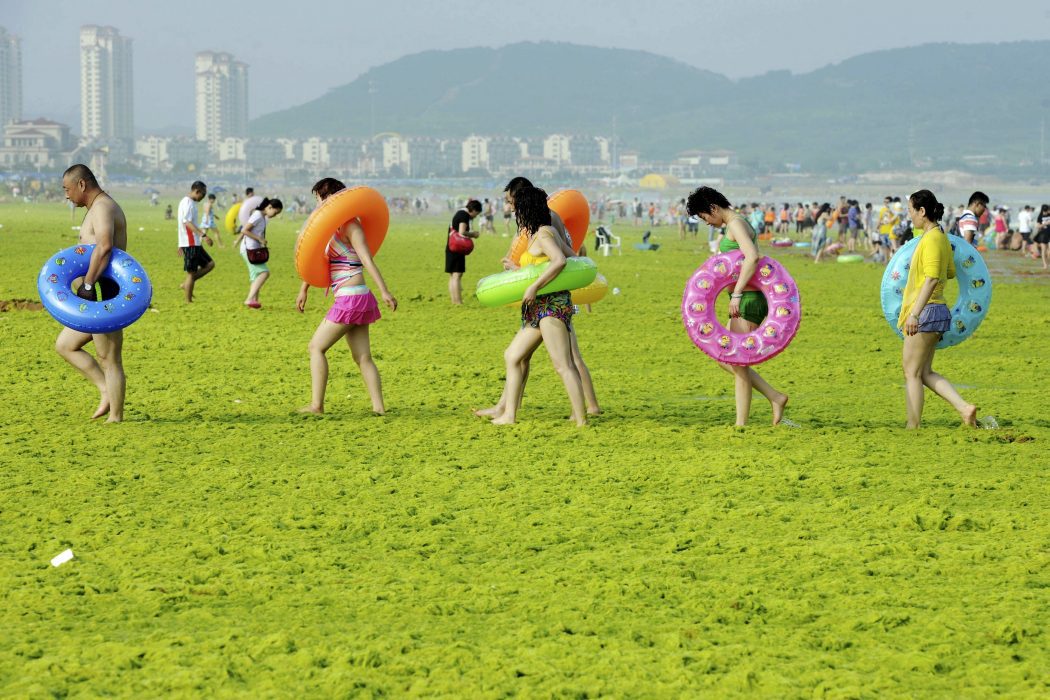Environmental Humanities could initiate a dialogue and a mode of thinking that is simultaneously based on critique and action and thereby capable of bringing in policy changes, says Sritama Chatterjee.
The tragopan last week had heard
The rumour from another bird
-Most probably a quail or sparrow:
Such birds have gossip in their marrow-
That man had hatched a crazy scheme
To mar their land and dam their stream,
To flood the earth on which they stood,
And cut the woods down for their wood.
Vikram Seth, “The Elephant and the Tragopan”, Beastly Tales: From Here and There.
The conflict between man and nature or the non-human “other”, as much as we would like to believe, is a feature not unique to the contemporary society. Rather it is a product of both the Renaissance and the Enlightenment rationality that placed man at the centre of the universe owing to his capability to reason and think logically. The question is the outcome of this legacy today, when the planet as a whole is threatened by increasing concentration of Carbon Dioxide in the air raising serious concerns among climate scientists about the future of this planet. However as far as the issue of climate change is concerned, it has been largely a domain of the “sciences”, with almost little or no engagement from humanities. It is precisely this bifurcation between the disciplines that has only perpetuated the notion of nature as a “system” rather than an organic and intrinsic entity.In this piece, my objective is two-fold. First, I intend to argue how the rhetoric of progress or development and sustainability, which is at the core of all debates concerning environment ultimately, ends up being a vicious cycle. Secondly, how the emerging discipline of environmental humanities can address some of the concerns about climate change by promoting interdisciplinary collaboration and exchange not only in framing theoretical conjectures but also at the level of praxis. Here, it becomes important for me to realise the profoundly ironic nature of my endeavour because in attempting to comment on something as pertinent as climate change and sustainability, I am unwittingly embracing the role of a critic-commentator and claiming to possess knowledge of a phenomenon whose consequences are often unknowable and perhaps beyond our level of perception.
In order to illustrate my first argument, I would particularly use case-studies of the Ramsar Thermal Power Plant Project proposed to be built around Sunderbans and the East Kolkata Wetlands that serves multiple purposes both at the realm of ecology and economy and are not necessarily in opposition to each other. The Ramsar Thermal Power Plant Project arguably will be instrumental in ensuring that citizens of Bangladesh have access to electricity, a problem that has plagued the country for quite sometime. However, environmentalists and local citizens fear that this will not only destroy the natural habitat of Sunderbans, having an adverse impact on the livelihood of the people but also the wastewater released from the plant will pollute the Passur River. What is even more alarming is that mangroves are natural sinks for absorbing Carbon Dioxide and their elimination would inevitably contribute to Global Warming. In a similar way, the East Kolkata Wetlands, which is increasingly threatened by the Development Industry, acts as a safety-valve to the city of Kolkata.Therefore it is imperative on our part to become self-reflexive and be aware of our own ethical position so that we do not end up creating another academic industry out of environmental issues and climate change, presenting papers at conferences and writing books that might pave the way for our co-option into a neoliberal economy, which although inevitable is something that we must collectively resist if we want any discussion on climate change to be meaningful and productive.
An article titled “The Miracle of Kolkata’s Wetlands and one man’s struggle to save them”, recently published at The Guardian states: “The wetlands serve two functions that at first glance seem contradictory: they are the city’s free sewage works and they are also a fertile aquatic market garden. As well as fish, wastewater is used in paddy fields and vegetables are grown on the verdant banks and on a long, low hill created by Kolkata’s organic waste. This recycling makes Kolkata the cheapest major city in India. You can enjoy a traditional breakfast for 30p, a third of the price of Delhi.”
I might be accused of indulging in a kind of reductive binarisation at this point, but I would argue that it is important to acknowledge this binarisation and work from within it, as far as climate change and environmental issues in South Asia are concerned. This is because a dismantling of the binaries (climate change is no hyperreality) that we often advocate from our ghettoized and privileged intellectual spaces, has almost no impact at the local level because the perspective on climate change here is a top-down one and not a bottom-up one, as it ideally should be. To claim that people at ground zero do not care about the climate, I daresay is an extremely elitist and uninformed stance especially when the number of climate refugees throughout the world is increasing at a rapid rate due to sea-level rise and the gradual inundation of islands. Let us also remind ourselves that climate change is also at the heart of the uprising at Syria because it is a series of droughts that lead to people migrating to cities. Hence what I am trying to argue is that the reconceptualisation of citizenship and sovereignty that is occurring as a result of climate change is also due to a shift in the role of human beings from autonomous agents to geo-physical forces that in Dipesh Chakraborty’s words characterise the age of Anthropocene.What is at work in both the examples cited above is a unlinear and homogeneous model of modernity and progress that is always already implicated in an ideology of Eurocentrism and does not take into account alternative modernities that emerge at the grass-root level.
I would not enter into the genealogies of the word “anthropocene” and the current debates about it because it is beyond the scope of this essay but what I would definitely point out is that even while coalescing human history with geological history, anthropocene does assume human beings as a universal signifier, a limitation that we need to be aware of, if we intend to carve a post-anthropocene trajectory as well as a just future.
To return to the question of environmental humanities, what it can essentially do is to create a discursive space where philosophy, ethics and a sense of belonging to the planet interact to formulate a bridge between nature as a system that can be understood, schematised and represented and nature as an ontological category that creates a sense of awe, in a Wordsworthian sense of the term.
Its ability to produce enchantment, which is not naïve but critical, is perhaps what would result in the framing of an affect that the sciences always had within it but never recognised.
Environmental Humanities would initiate a dialogue and a mode of thinking that is simultaneously based on critique and action and thereby capable of bringing in policy changes. I would foreground that articulation of innovative forms of resistance and protest would be at the core of environmental humanities. For instance, the Maldives Government had conducted an under-water Parliamentary session in 2009 to draw urgent attention to rising sea-level changes. It is precisely the formation of these parallel spaces and creation of new solidarities that environmental humanities would aim it, while not losing sight of the relation between academy and the society at large. As Amitav Ghosh has argued in his recent book on The Great Derangement: Climate Change and the Unthinkable, it is imperative to write about climate change not in a dystopian future but in the present adopting a kind of realism that is otherwise absent when we talk about climate-fiction.Under such circumstances, how do we understand the relation between climate fiction and environmental humanities? Is it simply art for art’s sake or an art that has a political and moral agenda?
Climate fiction cannot be relegated to another genre that is simply propagandist in nature because then we enter the same vicious cycle of polarisation and alienation of environment, an act that we must intuitively resist in order to arrive at a more holistic understanding of climate change which encompasses aesthetics, politics and ethics that also form the basic premise of environmental humanities.
In Seth’s poem with which I had started this piece, the Tragopan ultimately died a martyr’s death to the cause of environmental justice, but martyrdom is something that we must not aspire for. At the same time it is important to mourn his death because mourning is perhaps what would remind us of the tragedy ahead and help us in collectively embracing the crisis and not be indifferent towards it.
In the picture: Swimmers walk with their floats on a beach covered by algae, in Qingdao, Shandong province, China, July 24, 2015.
Picture courtesy/ REUTERS














